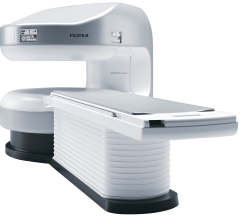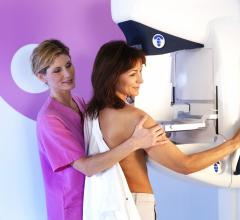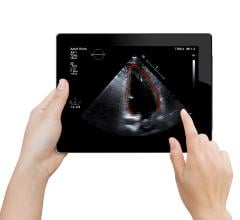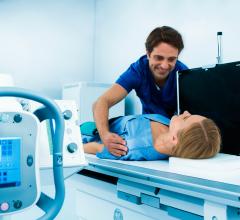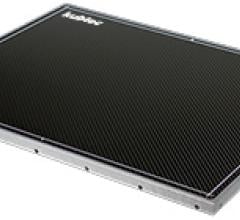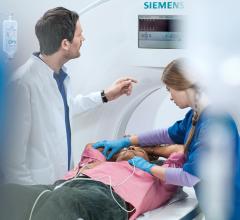July 25, 2017 — ViewRay Inc. announced recently that the first cancer patients have been treated using the company's ...
ScImage Inc. recently announced West Virginia University Health System has partnered with ScImage to utilize ScImage’s PICOM365 Enterprise PACS (picture archiving and communication system) throughout the eight WVU Medicine hospitals. The high-security, cloud-based PICOM365 will deliver cardiovascular image management, viewing and reporting capabilities for seamless workflow throughout the health system.
July 24, 2017 — Insignia Medical Systems has been selected to supply three National Health Service (NHS) Trusts working ...
Fujifilm’s APERTO Lucent is a 0.4T mid-field, open MRI system addressing today’s capability and image quality needs ...
Moffitt Cancer Center researchers launched a first-of-its-kind study comparing the long-term benefits of radiation therapy in women with breast cancer either before surgery (neoadjuvant) or after surgery (adjuvant). Their study, published in the June 30 issue of Breast Cancer Research, found that patients who have neoadjuvant radiation therapy have a significantly lower risk of developing a second primary tumor at any site.
July 24, 2017 — TomTec Zero is the latest addition to the TomTec portfolio. Now every physician reading cardiovascular ...

SPONSORED CONTENT — Fujifilm’s latest CT technology brings exceptional image quality to a compact and user- and patient ...
When the Society of Cardiovascular Computed Tomography (SCCT) was formed in the mid-1990s, its primary goal was to have ...
SPONSORED CONTENT — Fujifilm’s latest CT technology brings exceptional image quality to a compact and user- and patient ...
Samsung announced U.S. Food and Drug Administration (FDA) approval of the BodyTom Elite, an upgraded version of its portable, full-body, 32-slice computed tomography (CT) scanner. The upgraded system features a new visual design, and upgraded software, hardware and workstation.
July 24, 2017 — The U.S. Food and Drug Administration’s (FDA) Center for Devices and Radiological Health (CDRH) has ...
El Camino Hospital (Mountain View, Calif.) announced the installation of a new Calypso 4-D Localization System and will soon be able to treat patients with certain soft tissue cancers using this precise radiation technology.
SPONSORED CONTENT — EnsightTM 2.0 is the newest version of Enlitic’s data standardization software framework. Ensight is ...
RaySearch Laboratories reported that eight additional proton therapy centers worldwide have recently chosen RayStation as their treatment planning system.
The U.S. Food and Drug Administration (FDA) has cleared the first magnetic resonance imaging (MRI) device specifically for neonatal brain and head imaging in neonatal intensive care units (NICU).
DAIC and ITN Editor Dave Fornell discusses some of the most innovative new computed tomography (CT) technology and ...
Did you know that approximately one-third of all the data in world is created by the healthcare industry and that ...
Despite time and workload constraints, radiologists are looking for ways to become more directly involved in the care of their patients, according to the findings of a recent survey of radiologists, published online in the journal Radiology.
July 20, 2017 — Rates of recurrence in early-stage non-melanoma skin cancer (NMSC) patients were virtually identical if ...
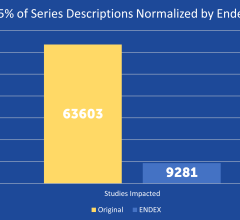
SPONSORED CONTENT — EnsightTM 2.0 is the newest version of Enlitic’s data standardization software framework. Ensight is ...
In a large, first-of-its-kind population, researchers found an experimental technique known as three-dimensional vascular ultrasound (3DVUS) estimated the quantification of plaque burden (in cubic millimeters) as an important addition to conventional risk factor profile in addressing patient risk stratification.
Kubtec announced the launch a new website focused on the applications of digital X-ray imaging and irradiation for research, industrial testing and forensic applications.
July 19, 2017 — The American College of Radiology (ACR) recently collaborated with professional medical societies to ...
Floyd Medical Center in Rome, Ga., recently installed three new Aplio 500 Platinum CV ultrasound systems from Toshiba Medical, a Canon Group company, in its cardiology department. To support ultrasound capabilities in the intensive care unit (ICU), Floyd Medical also installed the Xario 200 Platinum Series ultrasound system. Floyd Medical is leveraging the systems for strain imaging, pediatric and fetal echocardiography and stress echocardiography.
During the Society for Imaging Informatics in Medicine (SIIM) 2017 general closing session held in Pittsburgh, Fabien Beckers, Ph.D., CEO, and founder of Arterys, and his team, were awarded the $10,000 Innovation Challenge grand prize. Arterys was awarded for the project, Intelligent Imaging Platform Supporting Translational Research and New Product Creation. The project addresses the need for simple, comprehensive, quantitative and repeatable imaging that demonstrates the power of cloud medical imaging analytics to enable big data and precision diagnostics in the areas of oncology, cardiology and neurodegenerative diseases.
July 19, 2017 — The members of the American Society for Radiation Oncology (ASTRO) have elected three new officers to ...

 July 25, 2017
July 25, 2017 

